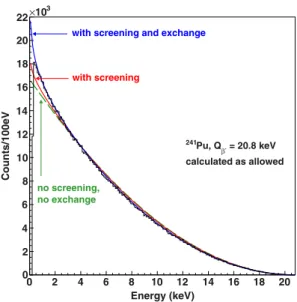Calculation of beta spectral shapes
Texte intégral
Figure



Documents relatifs
Since the spatial distribution of the recoil ions collected by the detector is very weakly sensitive to the value of a βν (see figure 15), this calibration in
Zaprionus indianus is assigned to the subgenus Zaprionus, species group armatus and species subgroup vittiger (Chassagnard, 1988; Chassagnard and Tsacas, 1993).. We provide here
A computer code, BetaShape, has been developed at the LNHB to calculate the beta spectra for allowed and forbidden unique transitions according to the assumptions described in
If the breast is pendulous elevate the breast (infra-mammary area/undersurface of the breast). Notice any changes in the breast skin such as dimpling, puckering, or asymmetry..
Experiment 4: ZPC masking with anti-ZPC antibodies Table 4 shows that the number of spermatozoa bound to the zona pellucida was not different after incubation with anti-ZPC antibody
According to the point of view of the French mathematicians who participated to the conference, a number of topics on which Iraqi mathematicians are doing research is not connected
(.tbereallllrltetforldf'-directedieaminginaworid with values largely framed within a formal context? A5educaton,exploringooD- forma1 autonomous leaming, weseek clues 10
using other records in the lake sediment, including pollen (vegetation change), diatoms (lake water pH and chemistry), SOOt (coal combustion), charcoal (wood combustion),